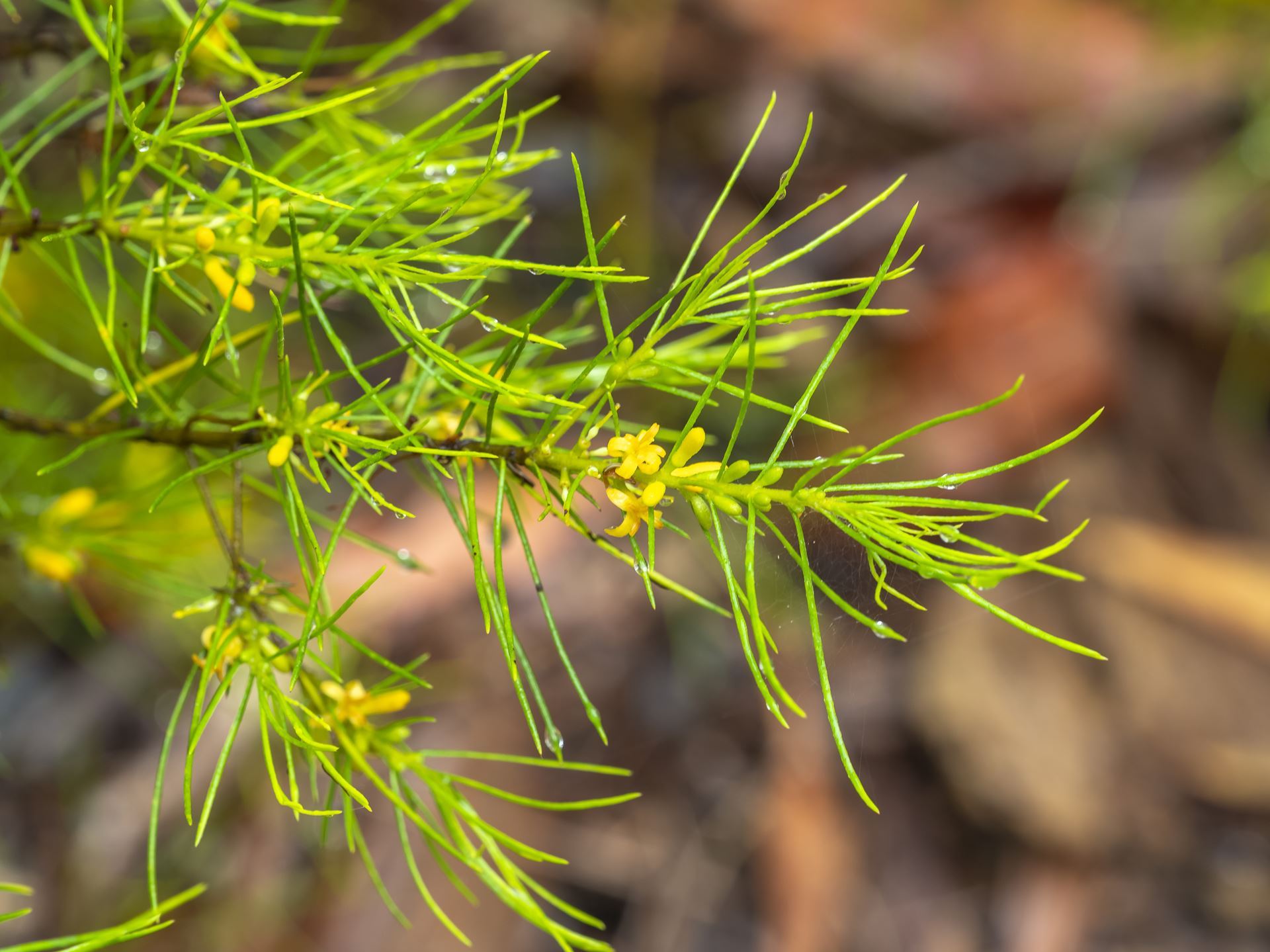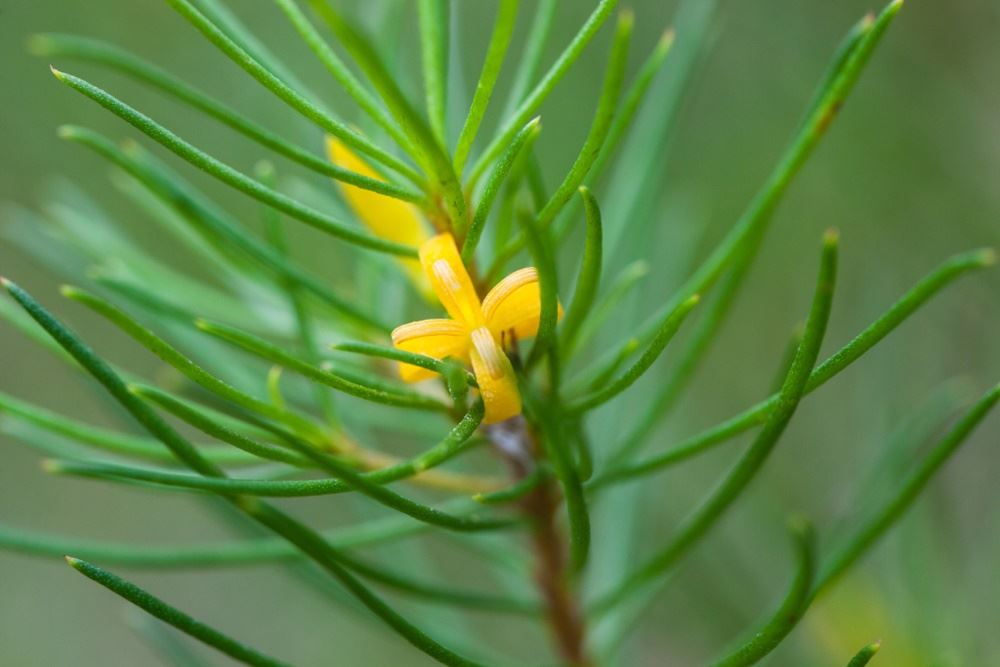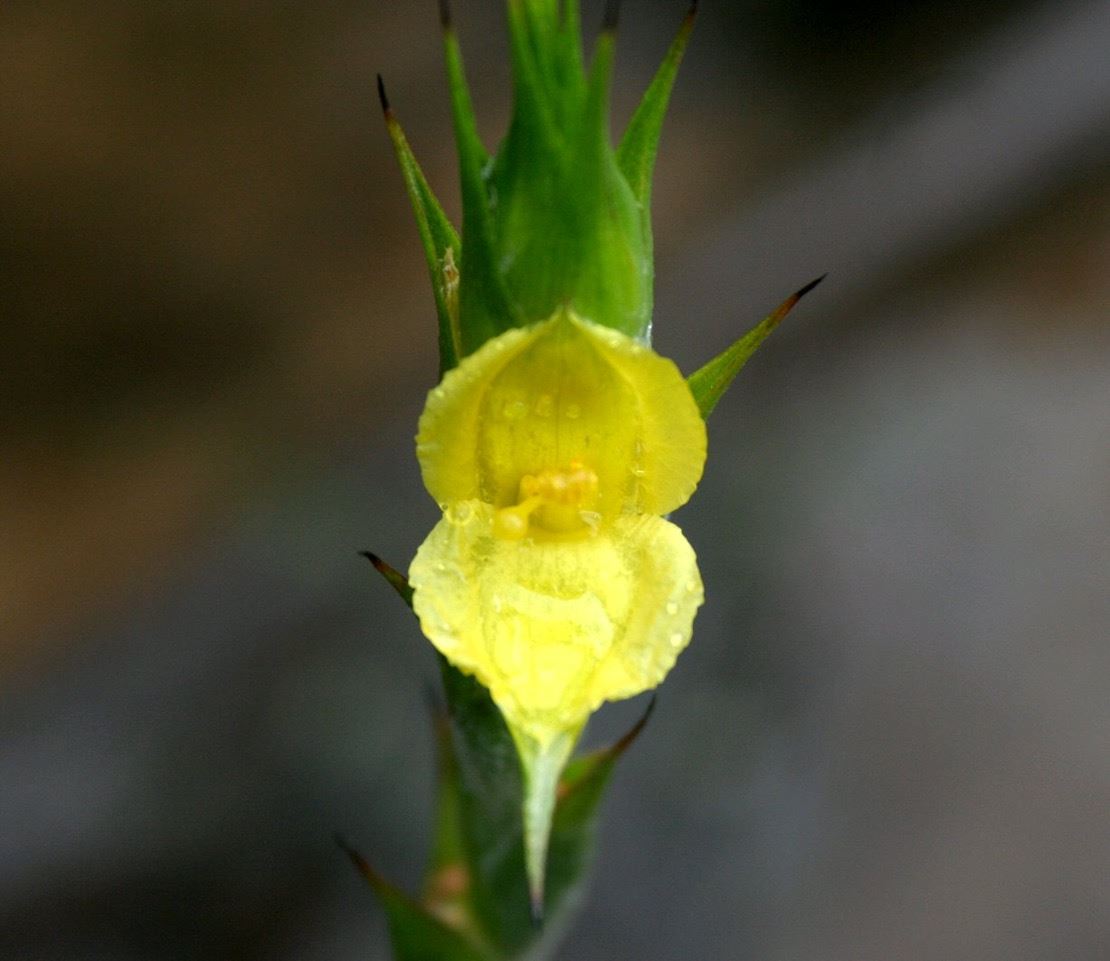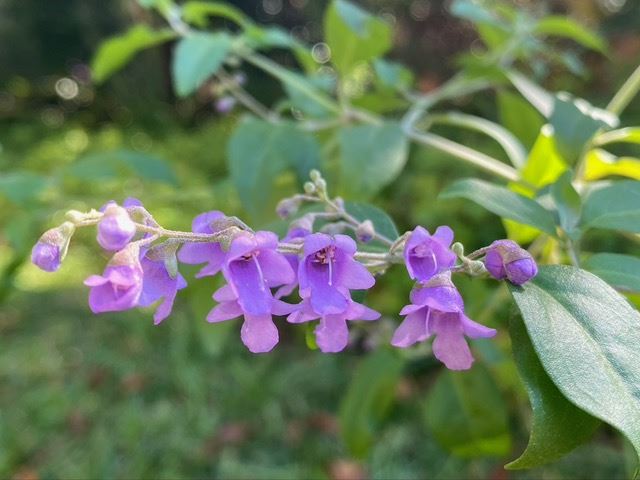Hunter Valley District Group |
Hunter Valley Plant profiles |
These profiles have been developed by Mark Abell,. Ones marked with * only grow in the Hunter (I.e. are indigenous).
|
Acacia elongata, Swamp Wattle Acacia elongata is an upright, open shrub to small tree from about 1.5 metres to 7 metres in height. Like most members of the genus, the mature plant does not have true leaves but has leaf-like flattened stems called phyllodes. The phyllodes are linear in shape from 50-130 mm long by about 3 mm wide with prominent longitudinal veins and ending in a short point. The phyllodes are often curved. The lemon-yellow flower clusters occur in the axils of the phyllodes. Flowering is mainly in late winter and spring. The forms found in the Hunter Valley are often a bright yellow. A. elongata is not widely cultivated but smaller forms are excellent garden plants that grow quickly and flower within one or two years from seed. It is reliable in a range of soils and flowers best in full sun or dappled shade. This species is often found in moist soils and is adaptable to areas which suffer short periods of inundation. Distribution: Open forest and woodland in eastern New South Wales - may just extend across the borders into Queensland and Victoria. Propagation is relatively easy by normal seed raising methods following pretreatment by soaking in boiling water or by scarification. Source: https://anpsa.org.au/plant_profiles/acacia-elongata/ |
|
Acacia fimbriata, Fringed Wattle
Acacia fimbriata is a larger wattle that grows up to 5m high with fine green leaves. There is a dwarf form that grows up to 2.5m. The branches have an arching habit and the plant is attractive even when not in flower. Each yellow “flower” is a globular head of up to 20 smaller flowers. These are further grouped into racemes of up to 25 “flowers”. This results in a profuse display of flowers that covers the bush. A. fimbriata is an attractive and hardy plant for a larger garden with the dwarf form suitable for smaller areas. It is suited to a range of soils, and is best located in a sunny to part shaded position. A light prune sometime after flowering would help maintain a good shape. Propagation from seed is easy by first putting the seed in a cup & pouring boiling water onto them, once cool they can then be sown. https://resources.austplants.com.au/plant/acacia-fimbriata-2/ |
|
Acacia falcata, Sickle Leaf Wattle Distribution: found along the east coast of NSW into QLD - on the eastern side of the dividing range. It is widespread in the Hunter Valley often in areas that have been recently burned or disturbed - common along roadsides. Acacia falcata is a shrub usually less than 2-3 metres high. It has an open upright habit with distinctive curved phyllodes (falcate shaped). It is tolerant of a wide range of conditions and soils. Flowering occurs in late Autumn to early Winter, with clusters of cream coloured ball-flowers produced. Propagation can be done from seed - treated with boiling water or scarification. |
|
Acacia pendula, Weeping Myall Distribution: It is found mainly along the western side of the Great Dividing Range from central QLD down to Victoria. It also occurs in in the upper parts of the Hunter Valley. Acacia pendula is an erect tree up to 12m and it has a graceful weeping habit with attractive blue-grey foliage. The cream flowers tend to be hidden within the foliage and unlike most wattles are not the main feature. Whilst Acacia pendula has a preference for alluvial soils it will grow in a wide range of conditions (including on clay) and is both frost and drought tolerant. Whilst probably a bit big for suburban gardens, it can be used for a number of purposes including as an attractive feature tree, a windbreak, or as a shelter tree. Propagation is done with seed which is treated by soaking in boiling water. Put the seeds in a cup & pour boiling water over them, sow when the water has cooled down. There is a nice avenue of these lining the entrance to Burrendong Arboretum. |  |
Actinotus helianthi, Flannel Flower Distribution: Open forest and woodland, usually on sand or sandstone on the coast and mountains of New South Wales and southern Queensland. In the Hunter region it is found predominantly near the coast and on the sandstone ridges on the southern side of the valley. Actinotus is a small genus of about 20 species most of which occur in Australia but there are 2 or 3 species native to New Zealand. Actinotus helianthi is the best known member of the genus and it has been in cultivation for many years. Flannel flower is a herbaceous or shrubby plant reaching almost a metre in height in good conditions but is often much smaller. The leaves are deeply lobed, grey and velvety in nature, giving rise to the common name. The flowers are small and occur in clusters surrounded by velvety, “petal-like” bracts. The overall appearance of each head of flowers is similar to a daisy. Flowering occurs in spring to early summer (September to December) and is followed by fluffy seeds in a globular head. The seeds are dispersed by breezes. Actinotus helianthi can be cultivated in sandy soils, in raised beds, or in pots. Plants may not be long lived but, once established, can often “self-sow” so that new plants replace the originals. Good drainage is essential. There are some spectacular mass displays at the moment in areas that were affected by fires a few years ago. An interesting bit of trivia is that Actinotus is in the same family (Apiaceae) that Carrot and Parsley are also in. Propagation can be done from seed - fresher is better. The seed does better with some pre-treatment with either a wetting agent (gets the water past the hairy seed coats), smoke water, or even a light fire. Some detailed notes on methods of growing from seed can be found at - https://waratahflannelflowersg.weebly.com/horticulture.html |
|
Banksia oblongifolia, Rusty Banksia Distribution: Found along the East Coast of Australia from Ulladulla in Southern NSW through to Bundaberg in Queensland. In the Hunter Valley it can be found from the coast inland to around Kurri Kurri. It is found in a range of different habitats from coastal heathlands through to dry sclerophyll forest and grows on well drained soils. Banksia oblongifolia is an open multi stemmed shrub typically to 1-1.5m high with a similar width, though some forms found in forested areas can grow up to 3m. The flower spikes (occurring from Autumn to Winter) are pale yellow, with the buds found in a range of colours from blue-grey to a greenish yellow. The seeds are enclosed in woody follicles which stay on the cone till burnt by fire. The new growth is hairy and an interesting rusty colour. Its relatively small size and interesting flowers make it a good garden plant for well drained soils in areas from full sun to part shade. Propagation is mainly from seed. |  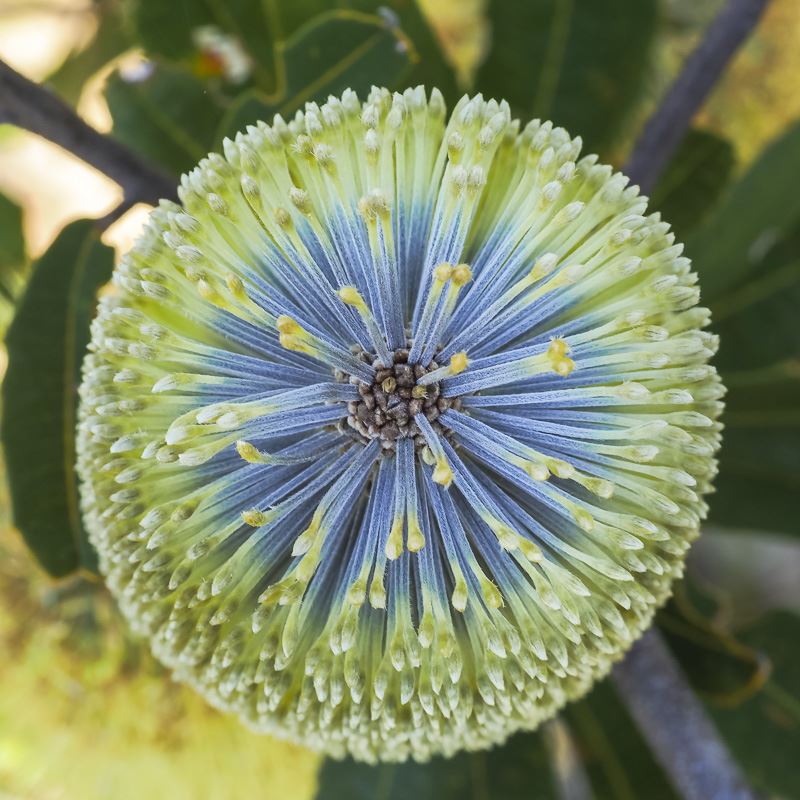 |
Blandfordia grandiflora, Christmas Bells Distribution: Blandfordia grandiflora occurs in Eastern Australia from Hervey Bay to the Hawkesbury River, mostly on wet coastal heaths, but with colonies in unexpected places such as on Gibraltar Range, or into the mountains near Bilpin, or occasionally in coastal forests on heavier soils. Soils are usually high in organic matter. In the Hunter region it is mainly found in sandy swampy areas closer to the coast.
Blandfordia grandiflora is the most robust of the 4 species. The tubular flowers occur in groups of 6 or more on stems about 30-60 cm long. The flowers are quite large being up to 50 mm long and flared towards to tip. Typically the flowers are red with a yellow tip, but forms with all yellow flowers are also known. The flowers contain nectar and a frequented by honey eating birds. This is a popular plant in cultivation although it is very slow growing and can easily be “swamped” by more vigorous plants. It requires moist, well drained soils preferably of a light texture such as sandy loam. It is tolerant of at least moderate frosts. The plants grow well with ample water. In the summer, especially when flower stem elongation is proceeding, regular watering is essential. At the same time the water must be able to drain away. Plants standing in excessively wet areas do poorly and can be damaged by root rot. Whilst Blandfordia plants grow naturally in areas that vary from full sun to semi-shade, some protection from full sun is appreciated and deep shade should be avoided. Weeds can become a problem. Blandfordia does not compete well and can be choked out especially by stoloniferous invaders. Hand-weeding before a problem develops is ideal. Although in the wild they grow healthily in poor soils, it can do much better in cultivation with a suitable fertiliser regime. Fertilising with a native slow release fertiliser should provide good results. They are often best grown in pots (right), where control of the environment (soil, water, weeds, fertilising & light) is more easily managed. Propagation is best done from reasonably fresh seed and usually can take three years to flower. Older plants can also be divided to obtain new plants |
|
Brachyscome brownii Distribution: Endemic to the southern part of the Hunter Valley from near Putty into the Brokenback Range. It is found in a well drained soils in dry sclerophyll forest areas, with the Brokenback population easily visible along the roadside. In drier conditions & over winter, the plants can die back to a rhizome that re-sprouts in better conditions.
The daisy flowers are purple to around 2.5cm in diameter. It can be found flowering from Spring through to Autumn. The leaves are around 2cm long and have toothed edges. The leaves and stems can tend towards adeep purple colour in sunnier locations. Like many other Brachyscomes, this species should take well to cultivation. It would do best in a semi shaded position with more reliable watering. Propagation should be easy from cuttings. Note: This plant has been recently assessed as Critically Endangered, however, on 4 of the 5 criteria used for the assessment. It was noted that there was “Insufficient data”. Unfortunately, the Brokenback population was not surveyed as part of the assessment. This population is somewhat larger than the other populations and it extends into the Pokolbin State Forest. Also, as it is a small plant that can be easily overlooked (especially when it is not in flower), there may be many more populations and plants still to be found. |
|
Brachyscome multifida, Cut-leaved Daisy This is a popular and widely cultivated small daisy. Distribution: Eastern Australia from southern QLD to Victoria. Found mainly in the centre to southern edge of the Valley. It is found in nature growing as an often straggly understory plant. Like many plants, its growth and habit are much improved when under cultivation. Brachyscome multifida will tolerate full sun to part shade and forms a dense mat to 30cm high, displaying purple flowers with a contrasting yellow centre. It flowers for most of the year, with a peak in spring - summer. It makes an excellent ground cover / foreground plant, is good in a cottage type garden, and is also good for a pot or hanging basket. In the garden it benefits from added watering in drier months. Propagation can be easily done from cuttings. The photo is from a plant at Congewai - near the Watagan forest. |
|
Callistemon linearis, Narrow-leaved Bottlebrush Distribution: Widespread from the south east of Queensland down as far south as Nowra and inland as far as Gilgandra. In the Hunter it is widespread, but mainly found in the lower Hunter. Note: in Queensland and many overseas herbaria, Callistemon has been subsumed into the genus Melaleuca. The flowers are the typical bottlebrush flower spikes, mostly red, but occasionally green forms can be found. It normally grows to around 2m and as the name suggests has narrow linear leaves. It prefers damp situations & can often be found near creek lines & swamp margins.
Whilst not common in horticulture it makes a hardy plant that takes well to pruning to thicken up and shape the bush. Once established it can tolerate a wide variety of conditions, from dry to very wet and it will also take some frost. Propagation can be done from either seed or cuttings. The very fine seed can be sown onto the surface of a damp seed raising mixture and grown till the seedlings are large enough to be handled for transplanting. Photos are of plants in Werekata National Park near Cessnock |
|
Chrysocephalum apiculatum - Yellow Buttons Distribution: It is a widespread plant that is found in every state in Australia. It occurs throughout the Hunter Valley. Chrysocephalum apiculatum is a variable species that is found in a variety of habitats, most commonly in open sites near the edges of woodlands or heaths. This is a low growing perennial in the daisy family (Asteraceae) with many small yellow button like flowers held above grey-green foliage. Given the wide distribution and habitats that it is found in there are many different forms around. It has a long flowering season, peaking in spring and summer, but flowers can often be found on the plants through most of the year. Chrysocephalum apiculatum is an adaptable and easy to grow garden plant. It grows in a wide range of soil types, is frost tolerant and drought tolerant once established. Whilst preferring sunnier spots it can also grow in light shade. Like many grey leaved plants, wet conditions can cause fungal problems on the leaves. Propagation can be readily done from cuttings, or from division of the suckering forms. More info in our plant database: https://resources.austplants.com.au/plant/chrysocephalum-apiculatum/ |
|
Correa reflexa, Common Correa Distribution: Very Widespread, from QLD, NSW, VIC, SA & Tasmania. In the Hunter Valley the red and green form can be found near the coast, with the all green form found further away from the coast. It is found in a range of different habitats generally growing in shaded areas on well drained soils. Correa reflexa is a shrub typically to 1m high with a similar width, some forms can grow up to 2m. The 4cm long, bell shaped flowers come in a few different colours. These vary from all green flowers through red/pink and green flowers to sometimes all red. It flowers most heavily from late Autumn through winter to early spring, making it a good option for flowers at at time when not as much else is happening. The leaves are glandular and generally hairy and usually around 2cm in size. This plant takes well to cultivation and requires moist well drained soils for the best results. Whilst it can take full sun, semi shade is preferred. Given the wide distribution of Correa reflexa It is best to try to find plants from areas nearer the Hunter Valley. The forms commonly available from VIC and SA generally do not like our more humid summer conditions. It is also a good plant for birds as the flowers contain nectar that is favoured by honeyeaters. As seed can be difficult to germinate, propagation is mainly from cuttings. | 
|
Dendrobium speciosum, Rock Orchid Dendrobium speciosum is an epiphytic orchid that can be found growing on the rocks or trees in the wetter gullies in the valley. The fleshy pseudobulbs are up to 45cm long with white or cream flowers occurring in late winter to spring. It naturally occurs along the east coast of Australia. D. speciosum is popular in cultivation and is easy to grow in tropical to temperate climates. It can be grown on branches of trees or on rocks where it receives nutrients through the break down of leaf litter that accumulates around its root system. While the plant is establishing its root system, it may need to be fixed into position by wire or twine. Eventually new roots will form which will grip the substrate firmly. The plant should not be planted directly into soil as the root system is not adapted to constant moisture. It can also be grown as a container plant in a coarse medium such as pinebark chips but it may require frequent re-potting. Glasshouse cultivation is not necessary. It should not be grown in dense shade or flowering will be discouraged. Application of liquid fertilizer during the growing season (spring - summer) will promote healthy growth. Watering should be kept to a minimum during winter. Photo a mass display at the Hunter Region Botanic Gardens https://anpsa.org.au/plant_profiles/dendrobium-speciosum/ |
|
Elaeocarpus reticulatus, Blueberry Ash Distribution: found widely in rainforest and coastal scrub along the east coast of Australia from South East Queensland to Eastern Victoria. It is found in the eastern parts of the Hunter Valley often nearer the coast.
It has a narrow upright habit and responds well to pruning. It is tolerant of a wide range of conditions and soils. Many councils use them as street trees. It tolerates light frosts. Flowering occurs in summer and masses of small, fringed, bell-shaped flowers are produced. These are usually white but a pink form is widely cultivated. The flowers are followed by globular-shaped, blue fruits which are retained on the plant for long periods. The fruits are not regarded as palatable, though the birds seem to like them. Propagation of E. reticulatus is mainly from cuttings. https://anpsa.org.au/plant_profiles/elaeocarpus-reticulatus/ |
|
* Eucalyptus fracta, Broken Back Ironbark
Eucalyptus fracta is found growing along the edges of the escarpment and can grow as a tree (to 8m) or a mallee. The plants closer to the edge of the cliffs tended to grow more as a mallee, with those further from the edge growing as trees. It was only named in 1997 and is classified as vulnerable. It has white flowers in spring and mature trees show the typical ironbark trunks, the smaller, upper branches are smooth & whitish. It would make an interesting plant for a larger garden. |
|
* Eucalyptus pumila, Pokolbin mallee Distribution: A vulnerable plant that is found on a few ridge tops and rocky slopes in the Broken Back Range west of Pokolbin. Endemic to the Hunter Region. Eucalyptus pumila is a small tree to a tall shrub that grows in a mallee habit (many stems arising from a large lignotuber) to 3-6m. The name refers to the small (for a eucalypt) habit of the plant. It has clusters of 7-13 attractive creamy white flowers. Flowering time is late summer to autumn. The many stems are smooth barked and relatively thin (~5cm). It is distinct from other eucalypts in the Hunter Valley and it has no close relatives. Eucalyptus pumila has been in cultivation for a number of years and it performs well, though it can take some time to develop a mallee habit. Given its small size, attractive habit and flowers this plant deserves to be much more widely grown. Plants can often be obtained from the Riverdene Nursery at Gresford & sometimes from the Hunter Wetlands nursery. Nindethana also has small packets of seed available. Propagation is from the fine seed which is sown on the top of a fine seed raising mix.. Note: In addition to E. pumila the Broken Back Range has a number of other rare endemic plants. These include - Eucalyptus castrensis, Eucalyptus fracta and Prostanthera cineolifera. I’ve yet to see the first one. Photos (from top right) flowers, mallee habit, lignotuber, seed pods, buds, Photo above: plants flowering in the foreground looking north over the Pokolbin area.
|
|
Grevillea guthrieana This is an endangered grevillea that is known from only two locations, near Booral and SW of Kempsey. The Booral population is the closest to the Hunter Valley and can be fond along Booral Road near Booral Creek. This plant was growing in areas that would get waterlogged from time to time - some were growing in and around the roadside drainage ditches. Whist probably not the most desirable of plants for the garden, it is an interesting plant with unusual green flowers. It was typically about 1-2m high with a soft light green foliage. It was flowering in September. |
|
* Grevillea montana - Hunter Valley Grevillea Distribution: the southern part of the Hunter Valley from Denman and east to Mt Sugarloaf. This Grevillea is one that is endemic to the Hunter Valley. Whilst the species name “montana” refers to mountains, the plant is found in many different habitats, with most of these not being on mountains. Grevillea montana is a small shrub up to 1.5m high with a similar spread, within its range it the size can vary as well as the intensity of the flower colour. The grey-green leaves are elliptical to 30mm long. It has small red and green flowers for much of the year, peaking in spring - these are attractive to the smaller honeyeaters. Some populations further up the valley can have yellow rather than red flowers. The shrub has a neat growth habit and grows well in either sun or semi shade. It is tolerant of a range of soil types and will take light frosts. As with all Grevilleas use only low Phosphorus fertilisers recommended for native plants. It can be readily propagated from cuttings. More info on our Plant database: https://resources.austplants.com.au/plant/grevillea-montana/ |
|
*Grevillea parviflora subsp. parviflora - Small-flower Grevillea Distribution: sporadically found through the Sydney basin and in the Hunter mainly around the Cessnock - Kurri Kurri area. Grevillea parviflora is generally less than 1m high with small pink spider pink flowers and narrow leaves. It flowers from July through to December. It is capable of suckering and it grows in shrubby woodland to open forest areas. Plants that have been disturbed by slashing and trail maintenance are much bushier and compact than what is found in less disturbed areas. This would make an interesting and attractive small garden shrub that should be more widely grown. Propagation would be likely from semi-hardwood cuttings. More info: https://resources.austplants.com.au/plant/grevillea-parviflora/ |
|
*Grevillea virgata, Nerong Grevillea
Distribution: A rare plant that is found between Nerong and Bulahdelah north of Port Stephens. Endemic to the Hunter Region. Grevillea virgata is an upright grevillea (to 2m) in the G. parviflora / G. linearifolia complex. The name refers to the twiggy and slender habit of the plant. It has terminal white flowers of about 20mm in size. and generally flowers from May to October. It is closely related to Grevillea humilis which can be found a bit further to the west and south. Grevillea virgata is not known in cultivation, but it should be similar in requirements to G. humilis and G. parviflora. The main requirement would be (like all Grevilleas) to avoid high phosphorus fertilisers. Propagation would be easiest done from semi-hardwood cuttings, though seed would also work. |
|
Hymenosporum flavum, Native Frangipani Distribution: Along the east coast of QLD & into NSW. The Hunter Valley is the southern limit of the distribution, with only a couple of populations found south of the Hunter River. It prefers moister forests & rainforests.
It is a popular and hardy garden plant and can take drier conditions and moderate frosts once established, though reasonable availability of water is preferred. The narrow growth habit makes it suitable for suburban gardens. Plus there are also some dwarf cultivars available that would even suit smaller spaces. Propagation is usually from fresh seed which germinates easily, cuttings can also be taken. |  |
* Persoonia pauciflora - North Rothbury Persoonia Distribution: This is only found in a small area around North Rothbury. Persoonia pauciflora is a critically endangered plant with less than 400 plants surviving in the wild. It is a shrub that grows to around 1.5m with soft light green foliage and yellow flowers. The name pauciflora is a reference to the relatively small quantity of flowers compared with similar species. It has smooth bark and is most closely related to P. isophylla and P. pinifolius. It grows on clay soils and can be found with the more common & widespread Persoonia linearis and Grevillea montana growing nearby. It is in woodland dominated by Spotted Gum and Ironbarks. This plant is threatened by urban development, with most of the original plants on private property or on roadside verges and undeveloped transport corridors. Recent propagation and planting efforts have added another 200+ plants to the wild population. |
|
Lambertia formosa, Mountain Devil Distribution: Found along the East Coast of NSW from Ulladulla in Southern NSW through to Evans Head in Northern NSW. In the Hunter Valley. It can be found from the coast inland to around Cessnock. It is found in a range of different habitats from coastal heathlands through to dry sclerophyll forest and grows on well drained soils. It is the only species in the genus Lambertia found in the eastern Australia - the remainder are all from SW WA. Lambertia formosa is a shrub typically to 1m high with a similar width, some forms can grow up to 2m. The 5cm long, showy red tubular flowers are in groups of 7 at the end of the branches. It flowers most heavily from winter to spring, though flowers can often be found at other times. The stiff leaves have a sharp point at the tip. The horned seed capsules that develop after flowering give rise to the common name of Mountain Devil. This plant takes well to cultivation and requires moist well drained soils for the best results. It can take full sun to part shade. The lignotuber they develop also means that once established they can be pruned quite hard to maintain a compact bushy form. It is a good plant for birds as the flowers contain nectar that is favoured by honeyeaters. Propagation is mainly from seed, though cuttings can also be taken.. |
|
Philydrum lanuginosum, Frog Mouth Distribution: Widespread near the edges of wetlands on the eastern side of the Great Dividing Range and across Northern Australia - also found overseas from SE Asia across to Northern Australia. Interestingly, it is a monotypic genus with this being the only species in the genus. This is a relatively small marginal plant that has lime green fleshy leaves and spikes of yellow flowers. The leaves are around 60cm long, with the flower spikes extending up towards 2m. The flowers occur from late spring through to early autumn. Philydrum is a good addition to a pond as it offers both colour and height, and provides protection for frogs and small fishes. If the conditions are suitable, it will self-seed around your pond.The plant can also die back to its roots over winter, which can helps to survive light frosts.Come spring, it will put up fresh leaves. Propagation is normally from seed, division, or by digging up the small seedlings that can appear nearby. |
|
* Prostanthera cineolifera - Singleton Mint-bush Distribution: endemic to the Hunter Valley - found in and around the Broken Back range between Pokolbin, Broke and Wollombi. The name is a reference to the amount of the oil cineol that is found in the leaves. This gives the leaves a pleasant fragrance. This vulnerable plant is found in the moister parts of the forests and gullies in its range. It has purple flowers from September to October. Size is from 1 to 4m. It is very closely related to Prostanthera ovalifolia, and in cultivation should be treated the similarly. Like many other Prostantheras, it makes an attractive garden plant. Propagation is done from semi-hardwood cuttings. More info here: https://resources.austplants.com.au/plant/prostanthera-cineolifera/ |
|
Senna artemisioides subsp. filifolia, Desert Cassia Distribution: Widespread through inland Australia, found in parts of the upper Hunter Senna artemisioides subsp. filifolia is a shrub of around 1-2m with narrow cylindrical leaflets. It is a hardy plant that is not as well known as the more widely grown silvery leaved subsp. artemisioides. Masses of bright yellow flowers occur in Spring. It is in the same family (Fabaceae) as the Wattles and the Pea Flowers. Propagation is usually by seed which would require either boiling water or scarification as a treatment. |
|
Swainsonia galegifolia, Smooth Darling Pea Distribution: widespread along coastal and Inland NSW and QLD - widespread in the Hunter Valley. It can be very abundant after fires Swainsonia galegifolia is a shrubby perennial up to 1m high with smooth, greyish pinnate leaves to 10cm. The mainly pink flowers are in spikes up to 15cm with each flower up to 2.5cm across. There are various colour forma from which through pinks, mauves & even some magenta coloured forms. These are followed by ballon like pods often with a tinge of pink. It flowers from Spring through to Autumn - peaking around November. In cultivation it grows easily in most soils and young growth can be burnt by frosts, but this grows out in spring. To stop the plants from getting woody & leggy give them a prune in winter. Do not plant where stock can graze as it is poisonous to stock. Propagation is easy from seed - treated with boiling water as per Acacias.
One weed that this can easily be confused with is Tephrosia grandiflora. This South African weed has similar foliage and flowers, but is easily distinguished by the seed pods. The Tephrosia pods (right) are flat and hairy compared to Swainsonia which has smooth balloon like pods. |
A plant between Booral and Buhaladelah
A mass display after fire at the Warumbungles
Colour variations at Burrendong Arboretum |


 Distribution: Coast and tableland areas of eastern New South Wales and southern Queensland. In the Hunter Valley it is widespread in open eucalypt woodlands and forest on a range of soils.
Distribution: Coast and tableland areas of eastern New South Wales and southern Queensland. In the Hunter Valley it is widespread in open eucalypt woodlands and forest on a range of soils.



 Blandfordia is a small genus of 4 species all confined to south-eastern Australia. They are slow-growing, grass-like plants with narrow leaves and bell-shaped flowers produced on stems arising from the centre of the clump. All are commonly known as “Christmas bells” as they generally flower in December-January.
Blandfordia is a small genus of 4 species all confined to south-eastern Australia. They are slow-growing, grass-like plants with narrow leaves and bell-shaped flowers produced on stems arising from the centre of the clump. All are commonly known as “Christmas bells” as they generally flower in December-January.

 Brachyscome brownii is a small perennial herb typically to 15cm high.
Brachyscome brownii is a small perennial herb typically to 15cm high. 





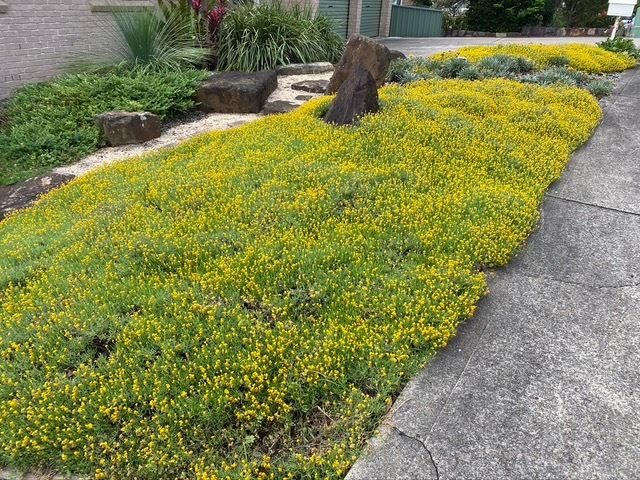




 Elaeocarpus reticulatus is a tall shrub or small tree to 9 metres, though it is generally smaller in cultivation.
Elaeocarpus reticulatus is a tall shrub or small tree to 9 metres, though it is generally smaller in cultivation. 
 Distribution: endemic to the Hunter Valley, found primarily along the Broken Back Range near Pokolbin, with scattered populations along the southern escarpment of the valley.
Distribution: endemic to the Hunter Valley, found primarily along the Broken Back Range near Pokolbin, with scattered populations along the southern escarpment of the valley.
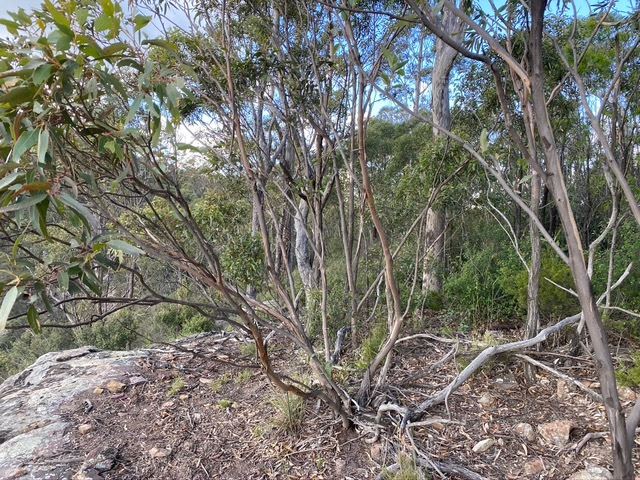
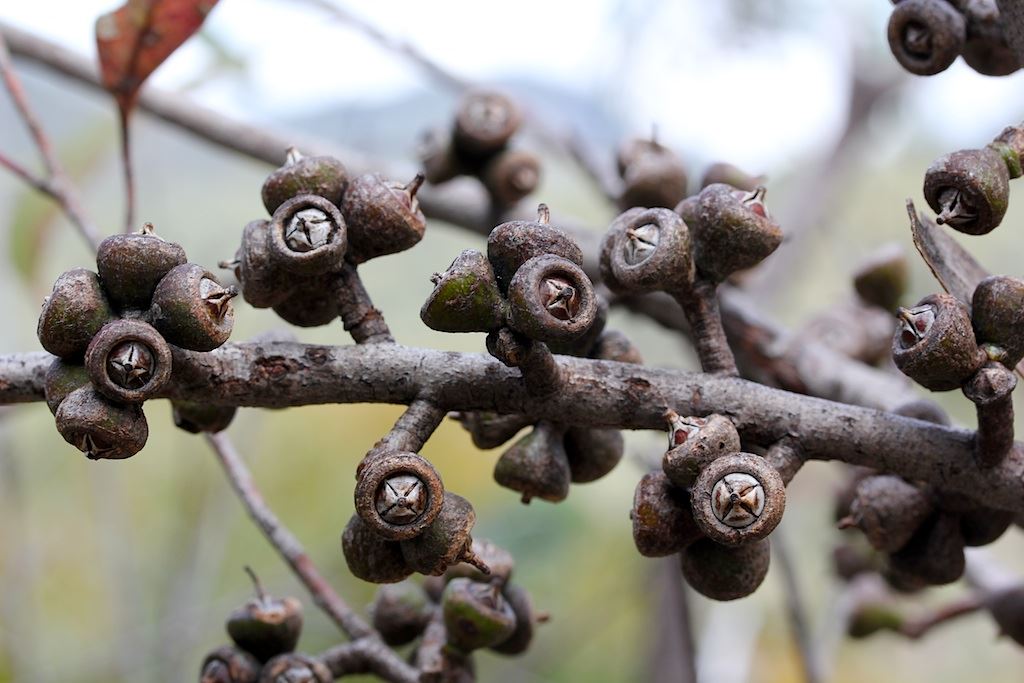
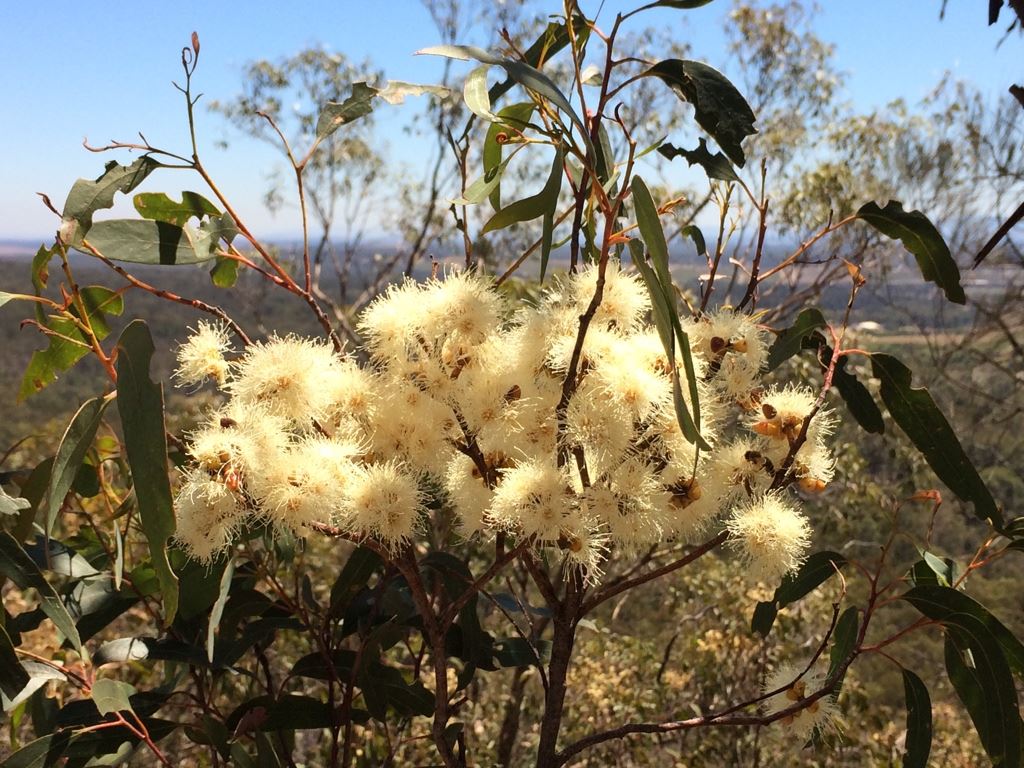
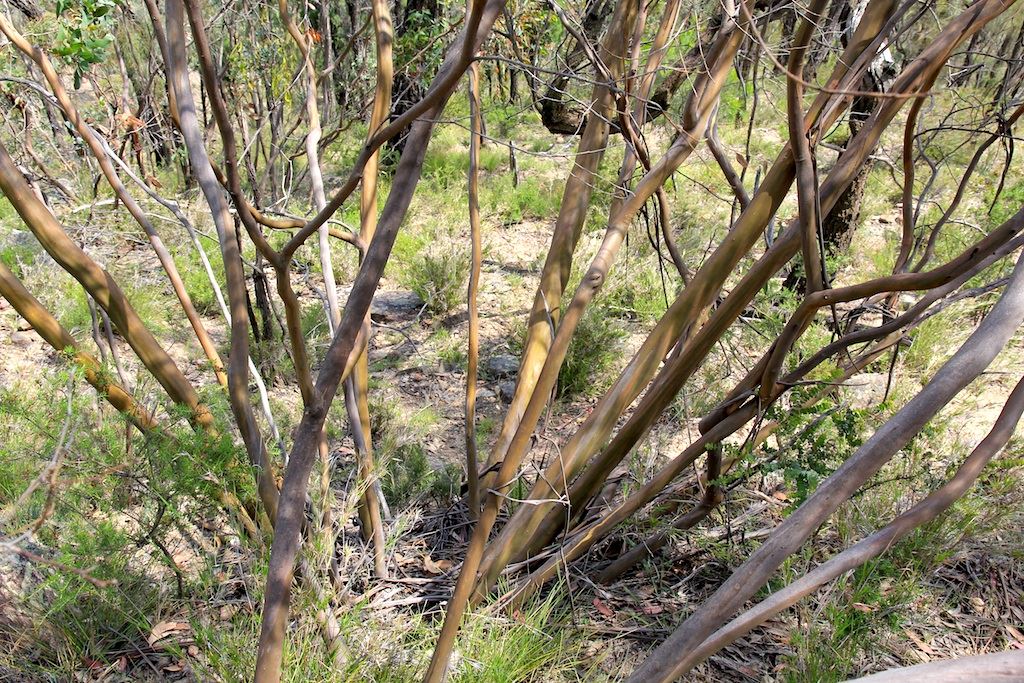
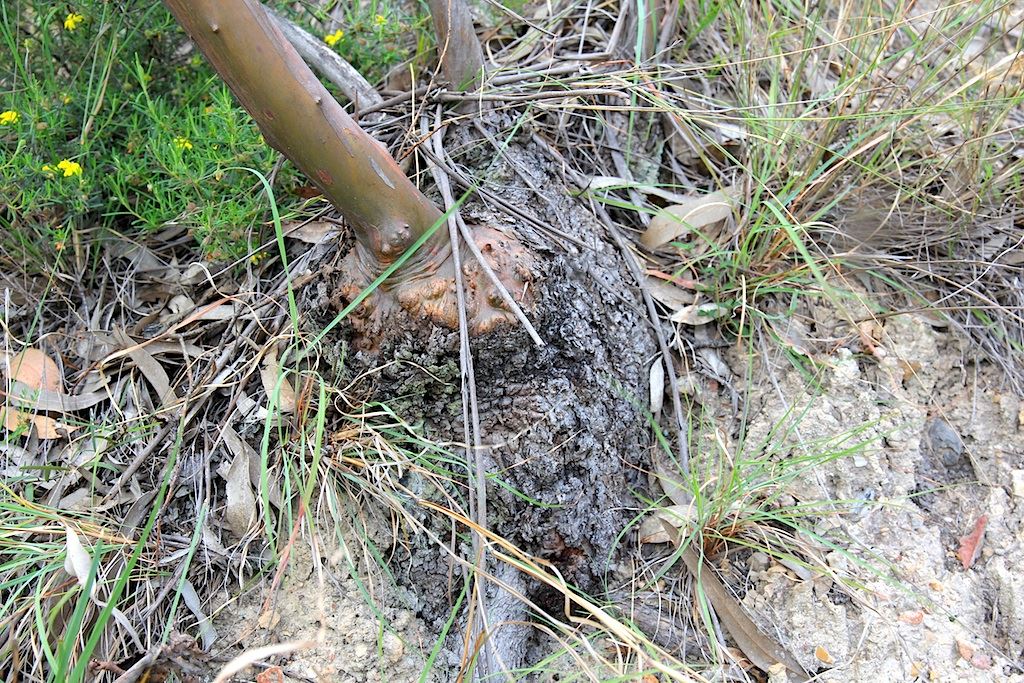
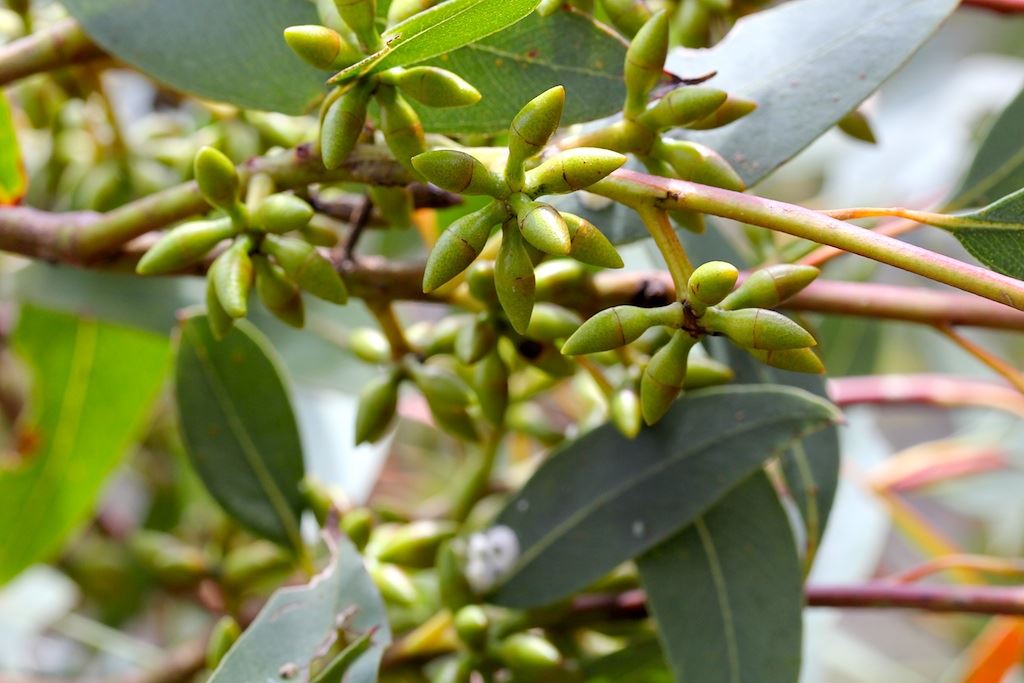

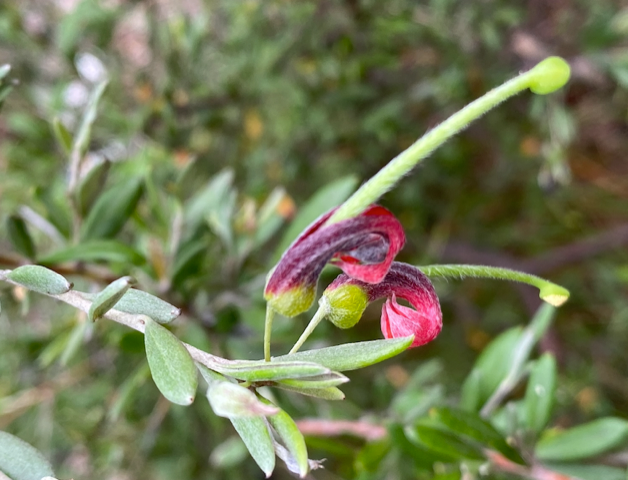
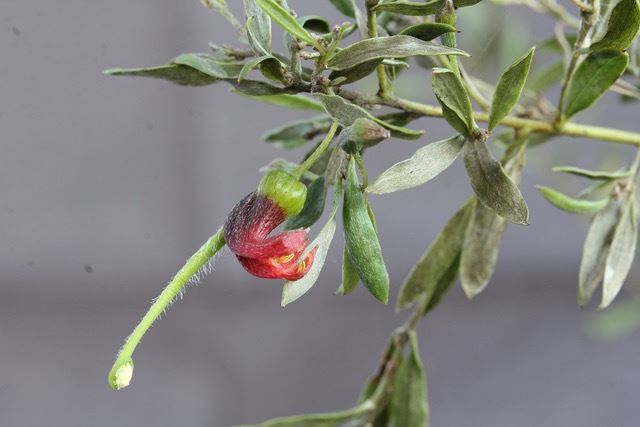

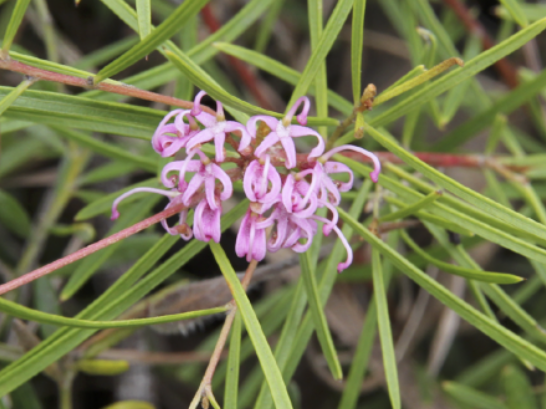


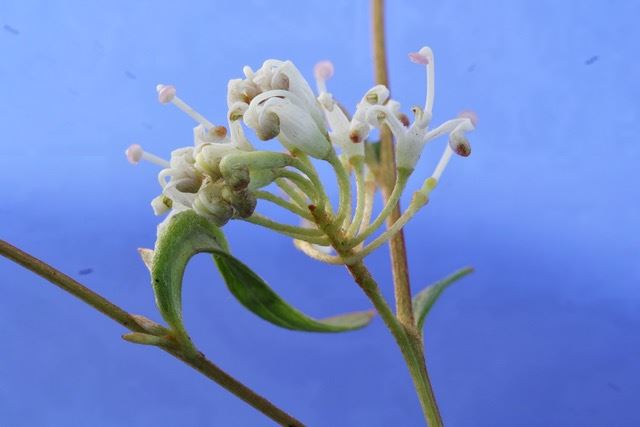
 Hymenosporum flavum in cultivation is normally a slender tree to 10m (though in rainforests it can grow much taller). It has attractive deep green leaves that resemble those of the related genus Pittosporum. In spring it gets covered with cream flowers that age to a deeper yellow, producing a two toned effect. The fragrant flowers are a similar size and shape to those of the exotic frangipani, thus explaining the common name.
Hymenosporum flavum in cultivation is normally a slender tree to 10m (though in rainforests it can grow much taller). It has attractive deep green leaves that resemble those of the related genus Pittosporum. In spring it gets covered with cream flowers that age to a deeper yellow, producing a two toned effect. The fragrant flowers are a similar size and shape to those of the exotic frangipani, thus explaining the common name.